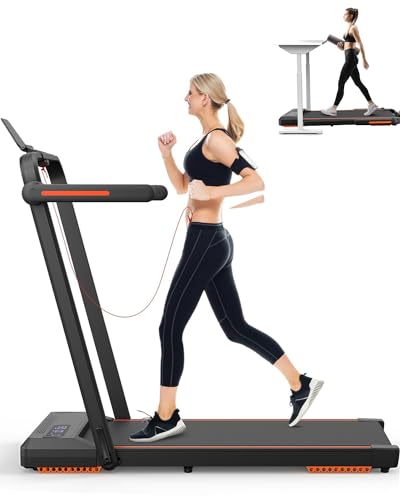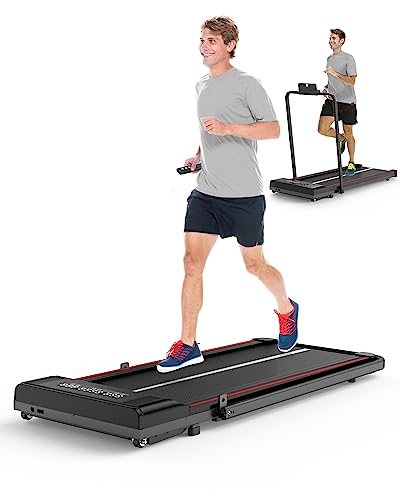treadmill-home6772
treadmill-home6772
There Is No Doubt That You Require Tread Mill
Treadmills: A Comprehensive Guide to Understanding Their Functionality, Benefits, and Appropriate Selection
Intro
Treadmills have actually become a staple in modern-day fitness regimens, both in homes and gyms worldwide. They offer a hassle-free and efficient method to preserve cardiovascular health, increase endurance, and assist in weight management. This short article explores the different kinds of treadmills, their advantages, features to consider when purchasing, and some FAQs to direct users in making informed decisions.

Kinds of Treadmills
When it comes to choosing a Treadmill Best (Https://Git.Starve.Space/Hometreadmills3211), it is vital to understand the various types readily available in the market. Here are the main categories:
1. Handbook Treadmills
- Mechanism: These treadmills have a simple design and rely on the user’s efforts to move the belt.
- Pros: More economical, quieter operation, no electricity required.
- Cons: Limited features, may not provide the same variety of exercise intensity.
2. Motorized Treadmills
- System: Powered by a motor that drives the belt, enabling users to walk or run at a set pace.
- Pros: Greater variety of speeds and inclines, geared up with many features such as heart rate displays and workout programs.
- Cons: More expensive and might need more maintenance.
3. Folding Treadmills
- System: Designed for those with minimal space, these treadmills can be folded for simple storage.
- Pros: Space-saving, typically motorized, flexible features.
- Cons: May be less resilient than non-folding designs.
4. Industrial Treadmills
- Mechanism: High-quality machines created for use in fitness centers and physical fitness centers.
- Pros: Built to withstand heavy use, advanced features, typically consist of service warranties.
- Cons: Pricey and not ideal for home use due to size.
5. Curved Treadmills
- Mechanism: A distinct style that allows users to move the belt utilizing their own energy.
- Pros: Offers a more natural running experience, promotes better running type.
- Cons: More pricey and can be noisier.
| Treadmill Type | Pros | Cons |
|---|---|---|
| Manual | Economical, no electrical energy needed | Restricted features |
| Motorized | Range of speeds, advanced features | Maintenance required |
| Folding | Space-saving, frequently motorized | May do not have durability |
| Industrial | Constructed to last, professional-grade features | Expensive |
| Curved | Natural running experience, promotes good type | Higher cost |
Benefits of Using Treadmills
Treadmills offer numerous advantages that can add to one’s general health and wellness objectives. A few of these advantages consist of:
- Convenient Workouts: Treadmills enable users to work out indoors regardless of climate condition.
- Cardiovascular Health: Regular use can improve heart health by increasing stamina and promoting healthy circulation.
- Weight Management: Effective for burning calories, which assists in weight loss and management.
- Customizable Workouts: Users can manage speed, slope, and duration to develop customized workout experiences.
- Safety: Treadmills offer a foreseeable surface area, reducing the danger of falls compared to outside running.
- Multifunctional: Many treadmills featured functions like heart rate screens, exercise programs, and even entertainment systems.
Choosing the Right Treadmill
When picking a treadmill, potential buyers need to consider several essential factors:
Features to Consider:
- Motor Power: Typically measured in horsepower (HP), a motor strength of at least 2.5 HP is advised for serious runners.
- Belt Size: A longer and broader belt accommodates various stride lengths, offering convenience during workouts.
- Incline Settings: Adjustable slope features imitate outside hill running and can increase exercise intensity.
- Weight Capacity: Ensure the treadmill can support the user’s weight for security and longevity.
- Console Features: Look for user-friendly dashboards, exercise programs, and Bluetooth compatibility for streaming music or other functions.
Budget Considerations
- Under ₤ 500: Entry-level manual treadmills appropriate for casual walkers.
- ₤ 500 – ₤ 1,500: Mid-range motorized treadmills that offer more functions and better sturdiness.
- ₤ 1,500 – ₤ 3,000: High-end models with innovative innovation, larger motors, and longer service warranties.
- Over ₤ 3,000: Commercial-grade treadmills perfect for frequent usage in gyms or training facilities.
Often Asked Questions (FAQs)
1. How typically should I use a treadmill?
It is suggested to use a treadmill a minimum of 3 to five times a week, including various strength levels for best outcomes.
2. Can I drop weight by utilizing a treadmill?
Yes, constant use of a treadmill can contribute to weight loss, particularly when integrated with a well balanced diet and strength training.
3. What is the best speed to stroll on a treadmill for newbies?
A speed of 3 to 4 miles per hour is an ideal range for newbies. It’s vital to begin sluggish and slowly increase speed as comfort and endurance improve.
4. Do I require to utilize a treadmill if I currently run outdoors?
Utilizing a treadmill can provide fringe benefits, such as controlled environments and differed workouts (slope, periods) that are not constantly possible outdoors.
5. How do I preserve my treadmill?
Regular upkeep includes oiling the belt, cleaning the deck and console, and examining the motor for optimal efficiency.
Treadmills are vital tools for those aiming to enhance their physical fitness levels in a controlled and hassle-free way. With different types available, understanding their features and advantages is crucial for making a notified purchase. By thinking about personal exercise requirements, space availability, and budget plan constraints, people can discover the most appropriate treadmill that fits their way of life. Incorporating treadmill workouts into a balanced physical fitness routine can cause improved health outcomes and a satisfying exercise experience.



